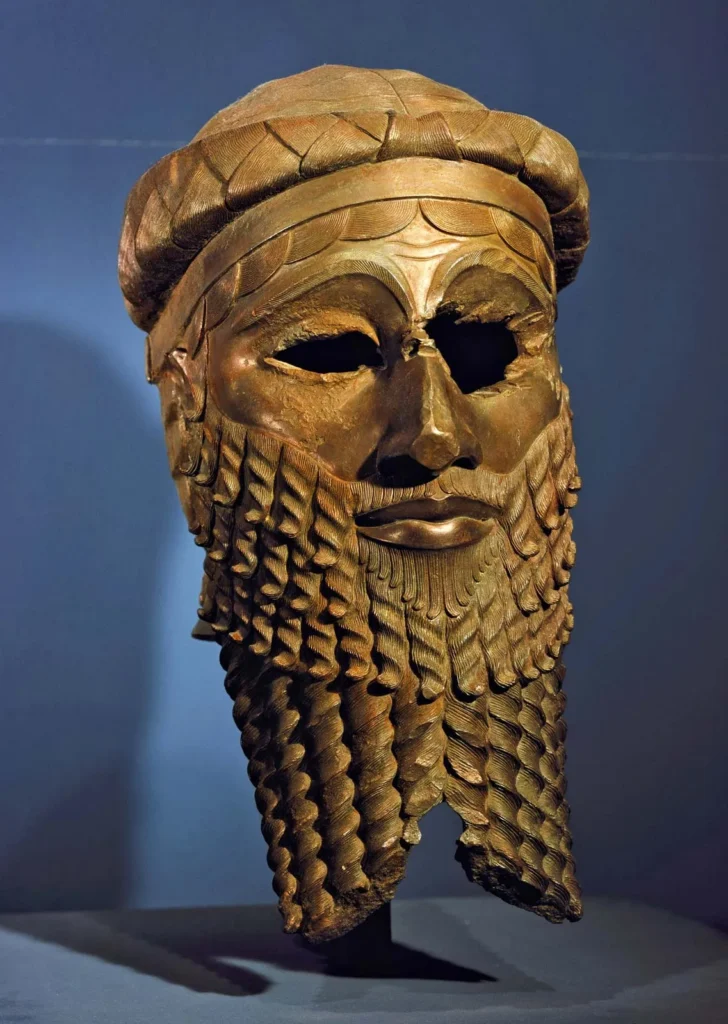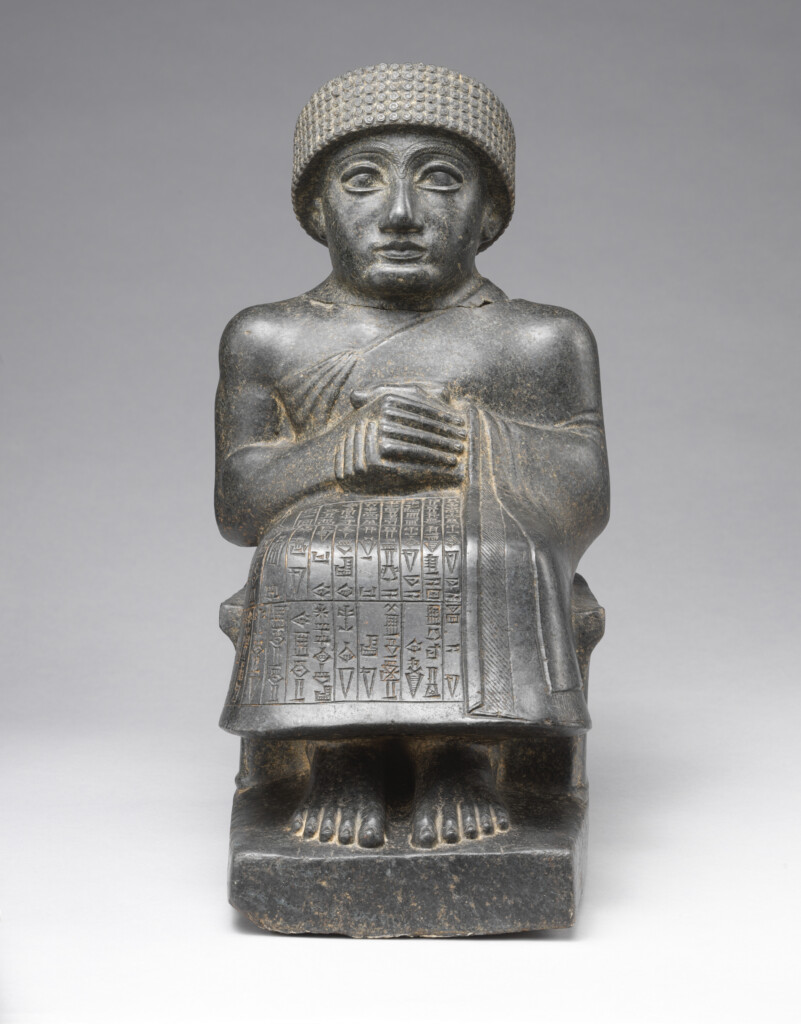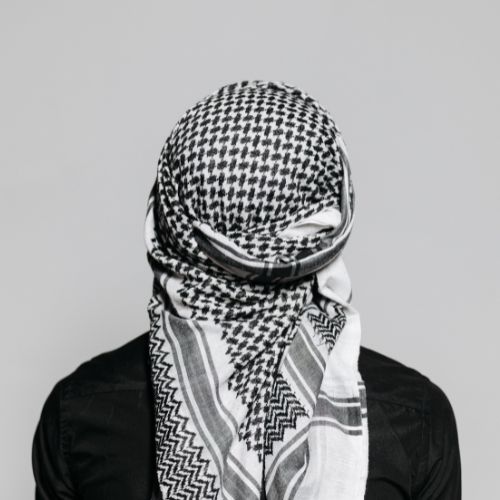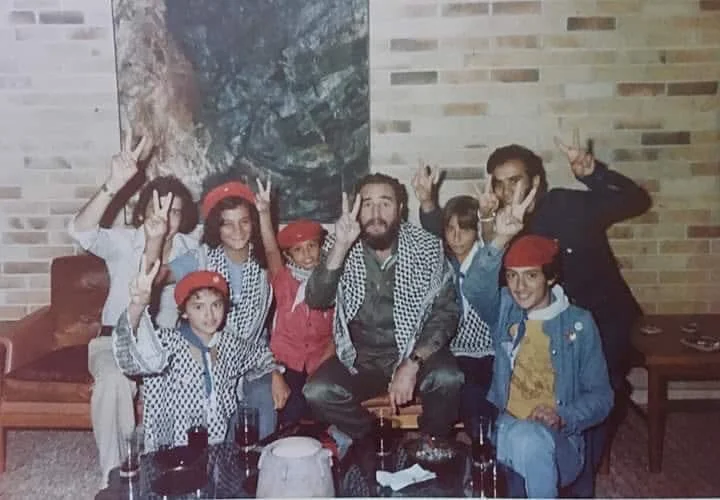After much contemplation and hesitation, I have decided to delve into the topic of the “Palestinian Kūfīyah (كُوفِيَّة)”. Initially, I felt uneasy about writing on a subject I, like many non-Arabs, had limited exposure to. My understanding of the deep emotions attached to it was minimal. While I wholeheartedly support the Palestinian cause and recognise their enduring struggle, adversity, and dehumanising conditions, it is not a cause that directly impacts me. Consequently, it felt challenging and somewhat inappropriate for me to write about an article of clothing that has become symbolic of their suffering, resilience, hopes, dreams, and faith in a brighter future.
Nevertheless, reflecting on my country’s own history, marked by two centuries of colonialism, akin to apartheid treatment, and ruthless subjugation, I have come to recognise that I may possess some understanding through my collective experiences—shaped by education, culture, and environment. This realisation has given me the courage to proceed and pen down this article.
The term Palestinian “Kūfīyah (كُوفِيَّة)” may evoke images of a black and white striped kerchief styled around people’s heads and necks. However, until the recent conflict, it remained relatively insignificant to non-Arab laymen. Amidst the current turmoil, the world has renewed its acquaintance with this black and white woven fabric, emerging as a symbol of the Palestinian cause and one of the region’s most recognisable political symbols. Over the past seventy-five years, this fabric has witnessed pivotal moments, stirred controversies, and encapsulated a spectrum of emotions. In this article, we will provide a brief history and explore its cultural and symbolic significance while also introducing new arguments and raising pertinent questions.
Etymology and Ancient Origins
The story of the “Palestinian Kūfīyah (كُوفِيَّة)” is not a recent one, and neither is its association with Palestinian liberation. The Kūfīyah (كُوفِيَّة) has deep roots that stretch back centuries in the Levant Arab landscape. Etymologically, the word “Kūfīyah (كُوفِيَّة)” is a derivative of the name of the city of Kufa in Iraq, meaning “from the city of Kufa”.
As such, its roots could be traced back to ancient Mesopotamia (c. 3100 BCE), when people living within the Tigris and Euphrates River system used to cover their heads to protect themselves from the elements. Its usefulness in the desert climate later percolated into every society across the diverse communities of the region.
With its roots traced back to Mesopotamia, the head covering in Iraqi culture, particularly the shemagh (شُمَاغ šumāġ), carries various nuances, ultimately signifying prestige and status. Legend has it that the Sumerian fishermen, seeking protection from the scorching summer sun, ingeniously placed a fishing net on their heads, evolving over time into a distinctive headgear with its own unique name.
The shemagh (شُمَاغ šumāġ), with its fisherman’s net design, water lines, and fish shells, is considered a talisman, believed to ward off evil even today, maintaining a connection to its Sumerian origins. Later worn by priests and kings who adorned white clothes and a black net made of sheep’s wool symbolising a fishing net, this headdress gradually merged with the shemagh (شُمَاغ šumāġ), known in the Iraqi dialect as the “Yashmagh.”

Bronze head of a king, perhaps Sargon of Akkad, from Nineveh (now in Iraq), Akkadian period, c. 2300 BCE, presently in the Iraq Museum, Baghdad; Source: Encyclopædia Britannica, Link

Statue of Gudea, named “Gudea, the man who built the temple, may his life be long”, Neo Sumerian Period c. 2090 BCE; Acc No 59.2; Source: Harris Brisbane Dick Fund for the Department of Ancient Near Eastern Art. “List of Rulers of Mesopotamia.” In Heilbrunn Timeline of Art History. New York: The Metropolitan Museum of Art, Link
Over time, the Yashmagh transitioned from being an accessory of the ruling and sacred elite to becoming the most popular headdress in Mesopotamia and its neighbouring regions. It became an integral part of the cultural identity, symbolising prestige and status for individuals across various Arab communities. Each community adopted the wearing of the Kūfīyah (كُوفِيَّة) with their own interpretation and twist to it. In fact, until the turn of the 20th century, communities of all faiths and tongues from the region sported the Kūfīyah (كُوفِيَّة).
Thus, the iconic black and white Iraqi shemagh (شُمَاغ šumāġ), also known as Yashmagh, Ghutrah (غُترَة), Cheffiyeh (چِفّية), and Jamadani / Jimidani, serves as a living testament to this rich heritage, transcending geographical boundaries and becoming a symbol of cultural identity for the Palestinian people in their struggle against British occupation since the 1930s.
A century-old tradition
Traditionally crafted from cotton and wool and worn by Bedouins and villagers in the Ottoman-controlled Levant Arab region, the Kūfīyah (كُوفِيَّة) evolved into a symbol of class struggle embedded in the psyche of the local people much before the Arab-Israeli conflict. While the affluent upper and middle-class Arabs embraced symbols of Ottoman style like the “tarbush” or “fez,” individuals from modest backgrounds favoured the Kūfīyah (كُوفِيَّة). Many Jews, Christians, and Muslims in the Levant, such as in Palestine and Iraq, chose the Kūfīyah (كُوفِيَّة) to mark their authentic local connection, setting themselves apart as “sons of the soil” within the Ottoman and later British-controlled Palestine.
In the initial decades of the 20th century, Palestine underwent significant transformations that laid the foundation for the contemporary identity of the black-and-white fabric. In the 1930s, during the British mandate, the Kūfīyah (كُوفِيَّة) emerged as a unifying national symbol, supplanting the Ottoman’ fez’ with widespread support. Concurrently, it became a potent emblem of resistance against British rule. As Palestinian freedom fighters, known as “fidā’īn,” predominantly from the rural areas, prominently wore the Kūfīyah (كُوفِيَّة) during their anti-British activities, a pervasive desire for a liberated Palestine spread across the entire population, regardless of class or economic status. This collective sentiment led to the widespread adoption of the Kūfīyah (كُوفِيَّة) by the general populace, serving to conceal the identity of the freedom fighters and facilitating their seamless integration with the rest of society.
20th Century Political Symbolism
Following the establishment of the state of Israel in 1948 and the subsequent displacement of thousands of Palestinians, the Kūfīyah (كُوفِيَّة) began its evolution as a symbol of resilience against occupation and the escalating mistreatment of the local population. Worn by both those who were displaced and those who remained, the Kūfīyah (كُوفِيَّة) swiftly became emblematic of the Palestinian cause. In the 1950s, a seemingly arbitrary decision by British officer General John Glubb to designate the black and white fabric for Palestinian soldiers, distinguishing them from their Trans Jordanian counterparts wearing the red and white shemagh (شُمَاغ šumāġ) in the Arab Legion, ultimately solidified and popularised one of the most visually distinctive political symbols of the 20th century.
It is intriguing to observe that during the British mandate period, the red and white Trans Jordanian kerchiefs, commonly called shemagh (شُمَاغ šumāġ), were produced in British cotton mills and served as the standard headwear for the British colonial police force in Palestine. Over time, these head coverings found adoption within the Sudan Defence Force and the Libyan Arab Forces, too.
In the subsequent years, as the occupying government prohibited the display of the Palestinian flag (1967-1993), the black and white Kūfīyah (كُوفِيَّة) underwent a transformation, becoming the unofficial flag of Palestine. This shift in symbolism gained prominence through the actions of the Palestinian resistance and prominent political figures, notably the late Yasser Arafat, former chairman of the Palestine Liberation Organization and President of the Palestinian National Authority. Internationally, other political figures, such as former South African president Nelson Mandela and the late Cuban revolutionary and president Fidel Castro, were known to don the black and white Kūfīyah (كُوفِيَّة) as a demonstration of solidarity and support for the Palestinian cause.
After tracing the historical journey of the Kūfīyah (كُوفِيَّة) from ancient times to its contemporary political significance, the subsequent part of our exploration will dive into its evolving identity, adapting to shifting socio-cultural norms. We will examine its relevance in the context of cultural appropriation and gender identity while also addressing the contemporary challenges it encounters in its production.
About Rajrupa Das:
Rajrupa Das, a proud Kolkata native, is a dedicated museum professional with a Master of Letters in Dress and Textile Histories from the University of Glasgow. Growing up in Kolkata, a city that beautifully juxtaposes historic charm with modernity, Rajrupa developed a profound appreciation for culture and history. She believes understanding a culture starts with its food and fashion, both deeply influenced by geography and environment. Rajrupa earned her Bachelor in Fine Arts and Art History from the esteemed Government College of Art and Craft, Kolkata. Her experience spans from being a curatorial assistant at Glasgow Museums Resource Centre to working at INTACH and serving as a Museum Coordinator for Women’s Museum UAE in Dubai. Earlier, she contributed to Sabyasachi Couture as a researcher and design analyst and worked in the corporate sector for leading organizations. Rajrupa’s research interests encompass the evolution of dress, textile designs, colonial influences, and innovative museum practices in developing nations.


